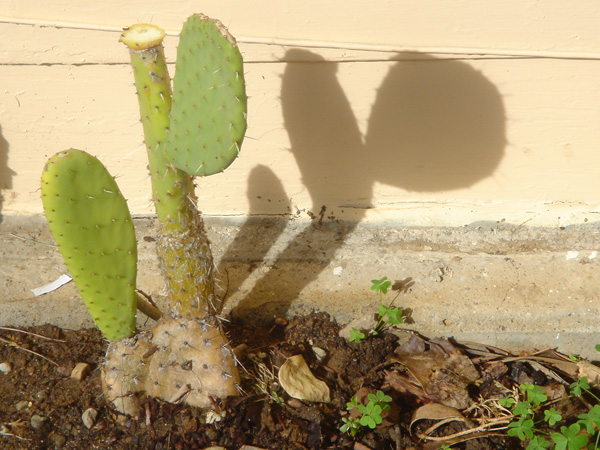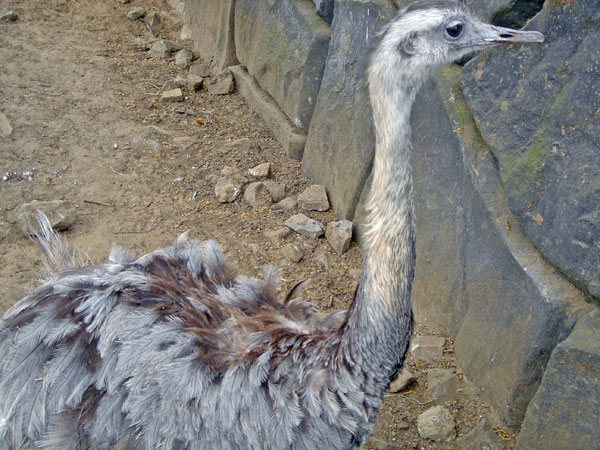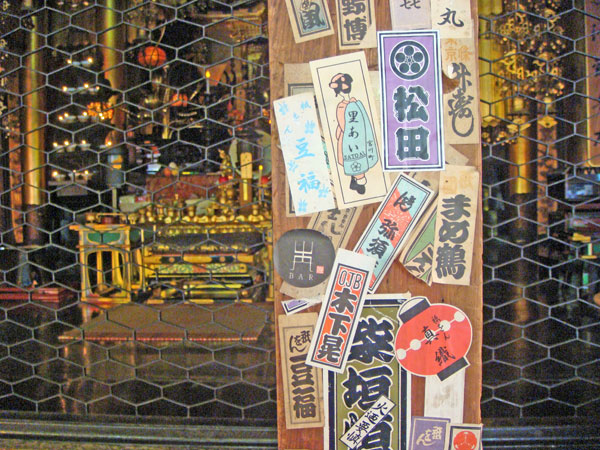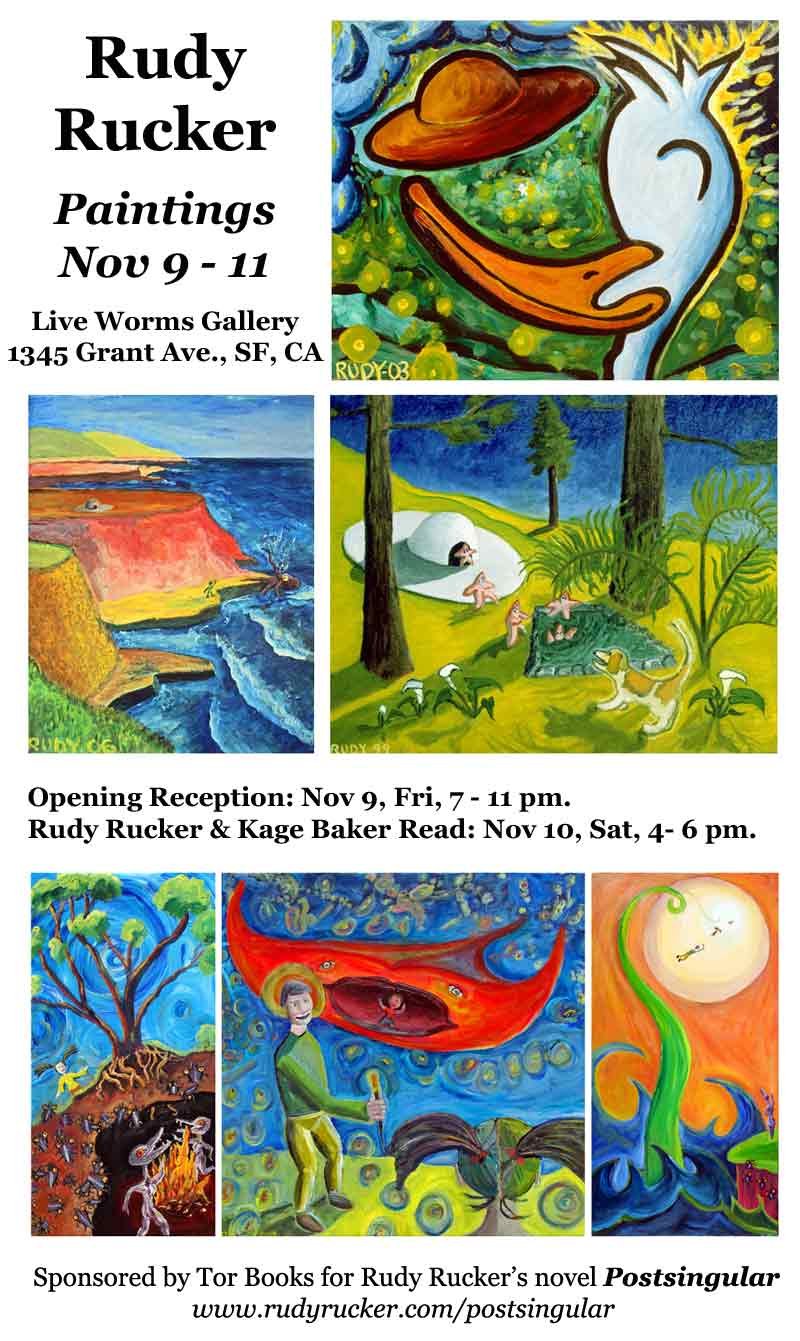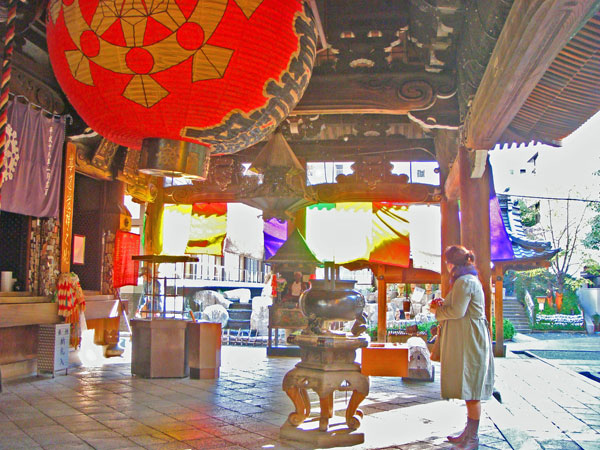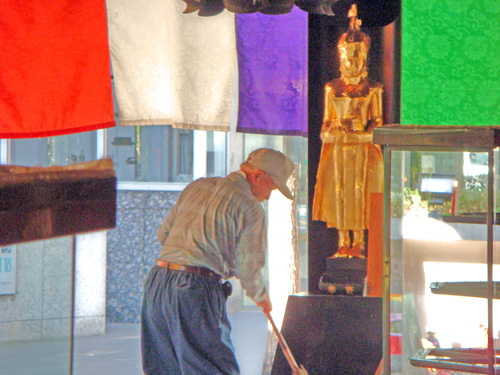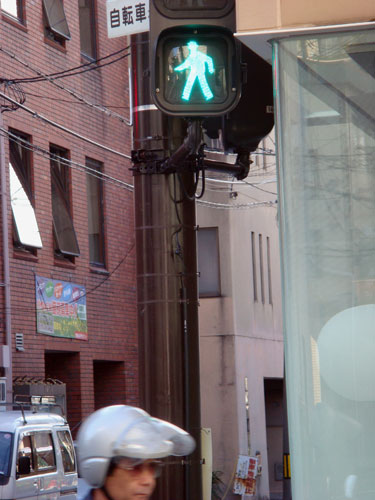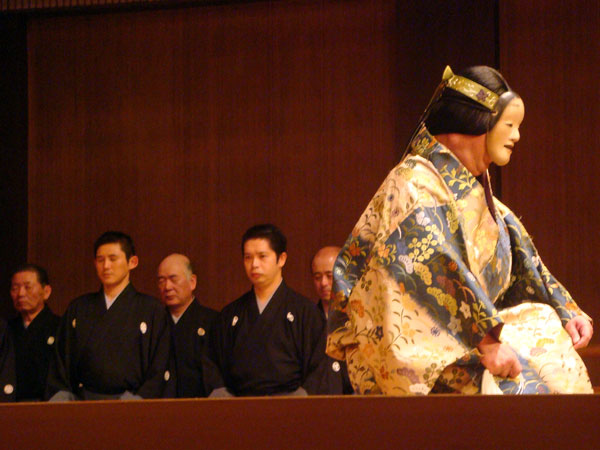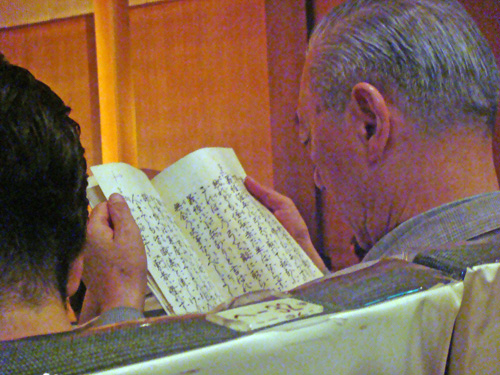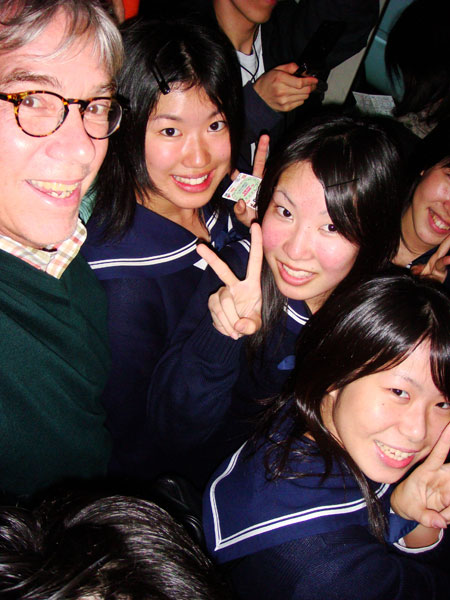For our last day of sightseeing, we go to the Toji temple in southern Kyoto. They have a flea market on the temple grounds on the 21st of every month, the date has to do with the number of buddhas, bodhisattvas, fierce kings, guardian kings, etc. that play a role in this sect’s heavenly cosmology.
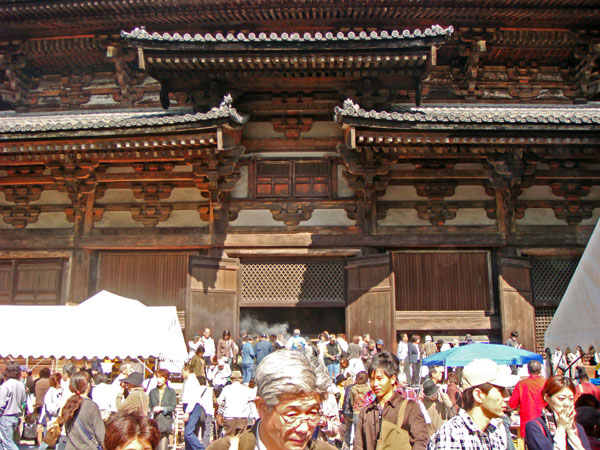
After nearly two weeks here I get a feeling of melting into the throngs of humanity. Even though I’m different. Actually, I’m starting to wish I was Japanese. They’re such beautiful people; when I see another Westerner I’m reminded of how big and awkward I am. The crowd at the temple is like lava. On the steps a censer burns incense, and there’s a steady patter of small coins being tossed into the alms bin at the top of the steps.
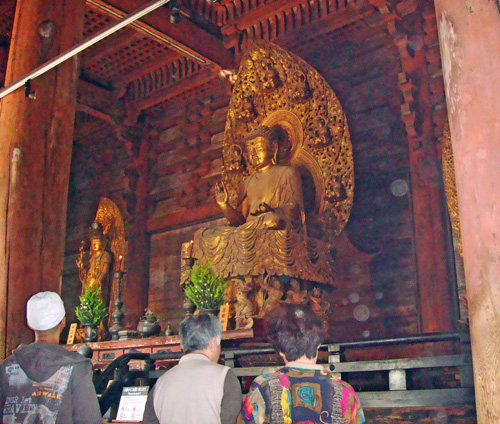
We buy a ticket to go inside the temple, and there he is, the infinitely compassionate Buddha. I get this rising feeling inside me like I’m coming apart, dissolving into the temple, merging into the bars of sunlight in the scrolls of smoke, the scuff of feet, the murmur of voices, the dust, the antiquity, the dry wood. I feel like crying. I’ve found what I came for. I’m seeing God. The ecstasy of travel. It’s like being a monk starving in a cell and after ten days the visions come, only the other way around, that is, you’re glutting yourself with sensation until, blessedly, you snap.
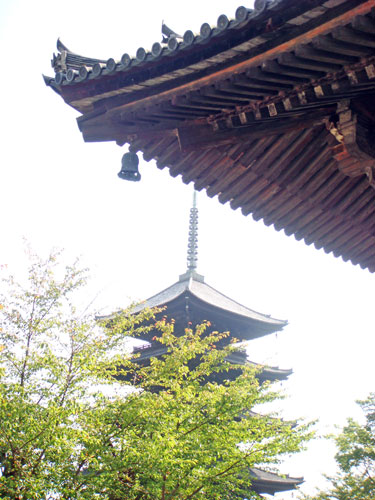
Outside is a pagoda in a garden. So beautiful. Fall just coming on Kyoto. In another couple of weeks the Japanese maples will turn red and we tourists will go absolutely daffy! Already you can buy red maple leaves in the market’s pricy fruit stores. Saw a bunch of grapes for $12. A platonic bunch of grapes, each grape large and round and plump. I settled for a Platonic Asian pear at $3. The pear is god.

A pair of apprentice geisha are out together, maikos, taking pictures like everyone else. I have this idea maikos might be country girls who are kind of roped into this not-so-desirable or pleasant kind of life. Being polite to businessmen.
The really beautiful women you see on the street aren’t gonna seek careers as maikos or geishas. They can do better. By the way, I really disliked the movie, Memoirs of a Geisha—I watched it just before leaving as it’s supposedly set in Kyoto. I mean, the movies is very nice to look at, but the story-line: ugh. A woman spends her life pining to be the mistress of an older man who bought here a cherry-syrup sno-cone when she was twelve? Puh-leeze. And, even though Gong Li is one of the greatest actresses ever, why didn’t Hollywood give some Japanese actresses a shot at the starring roles for this flick?
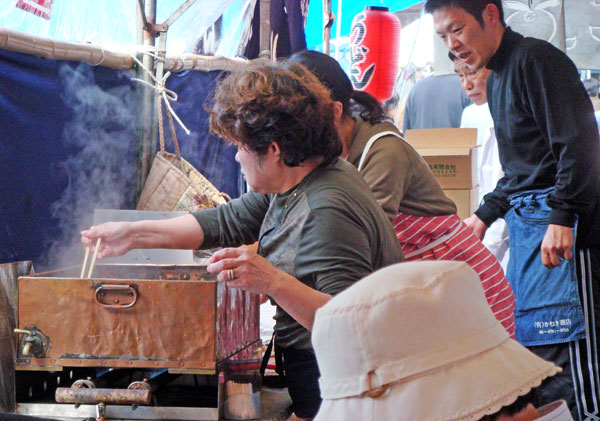
Back to the Toji temple. Sylvia and I get udon soup under a tent in the flea-market. Probably not something I’d do in many other countries. But the Japanese seem so clean and tidy, you feel safe with the street food. The cooks are working over burners, and guys are washing the bowls off in a tub in back. Shared pots of tea on every table. I really feel like part of it all, like a cell in an organism, with the crowd flowing past the tent. “Darshan” is the Indian word meaning the pleasure of being part of a large crowd.
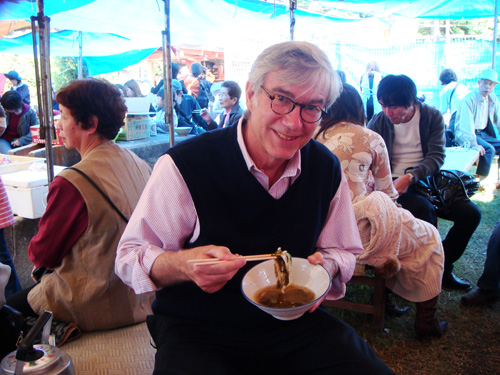
The guy my age sitting on the next table with his son and granddaughters keeps refilling my cup with tea, never meeting my eyes. I think in Japan it’s not polite to look strangers in the face. He’s wearing a brown suit and one of the those stingy-brim rain-hats they like here. When he leaves he finally looks over, smiles at me and says “Good-bye.” I realize he’s been having fun filling my cup. Darshan.
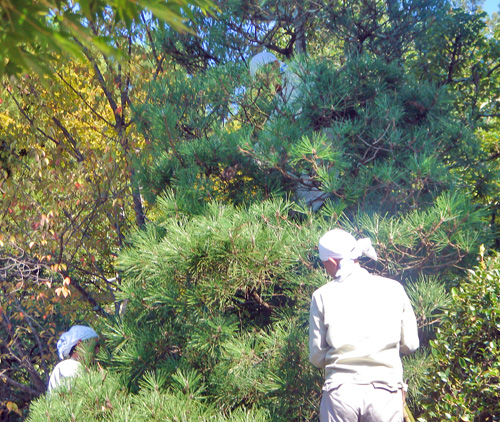
The gardeners really go after the plants here, there’s a word “ikebana” that means, I think, “pruning.” Three guys in this one tree, pruning it artfully. At home when I get my trees trimmed, it’s more a matter of blind chainsawing. Here it’s much more surgical, more thought-out. I’m tempted to get to work on my garden at home, big-time. Hard to get up high into the trees, though.
In the afternoon of the last day, I take a cab alone, seeking one last rock garden, at the Nansenzi Zen temple on the east of Kyoto up against the green hills.

I find a different style of rock garden here, with a little bit of stuff growing in it. I sit here for quite some time, taking in the clumps of leaves, the moss in the gravel, the aches in my tour-worn old body, the slow passing of time, everything so perfectly in place, and my usual worries about things to come are just more rocks in the garden. I rake around them, sit back, let the air drift, feel the moss grow. For the second time in the day, I’m feeling a welling up of religious excitement.

Moving deeper into the gardens, I cross an artful path across a pond, everything off-handedly where it should be. Wu wei, no sweat, no matter, never mind.
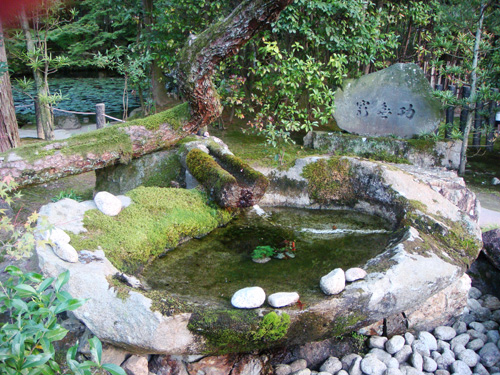
I come to a magical Zen fountain that’s dripping one or two drops every second or so into a rock basin, the drops are thoughts, souls, instants, ripples in the bowl. Above the fountain is an unbelievably crooked tree, supported on two crutches. By now my psychic weather is like the rising tide of music in “Day in the Life.” This is how I imagine the pre-epileptic-fit aura might feel, like for Dostoevsky’s Prince Myshkin.
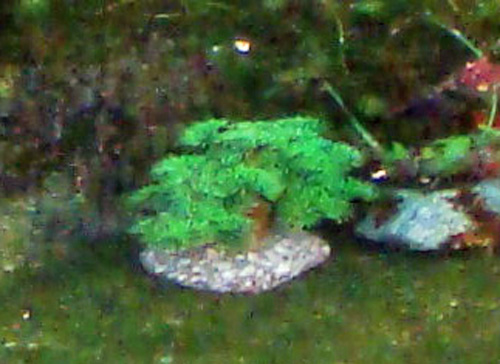
But—what’s that bright green spot in the rock basin? My god, some pinhead has submerged a plastic bonsai tree here in this utterly natural and authentic Zen fountain! A tourist? A Japanese Beavis and Butthead? A monk? What does this prickly bright green plastic object mean? For sure it’s a discordant honk in my garden of serenity. I rake my thoughts around it, doing my best to fit it in. But, dude, it’s busting my rush. I fish the plastic tree out of the basin and examine it with contempt. Rigid, bristly, nasty green.
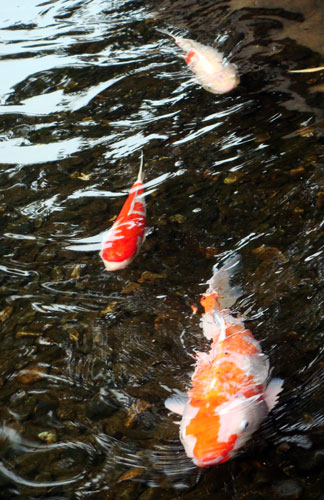
Should I hurl the bogus bonsai into the nearby koi pond? But it’s hardly my place to come here and rearrange things during the nanosecond duration of my visit, is it?
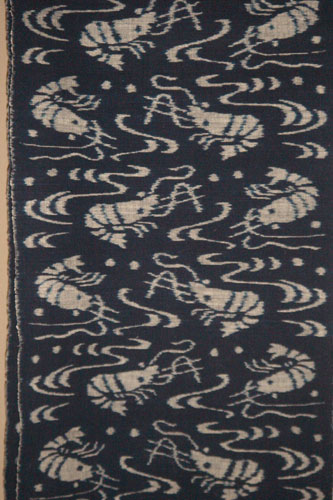
[Hand-woven obi in a factory store in the textile district of Kyoto.]
Distracted by the bogus bonsai, I forget all about satori and start fretting over whether I should have bought that expensive Kyoto-silk shirt with the perhaps too-flashy koi patterns last night. I’m coming down again. I put the bonsai back and the basin and beat a retreat to the rock garden and dig it again.

And then I begin worrying I should see more. The temple goes on and on, there’s more rock gardens than the first one. Of course the first one was the best. Ah, why am I looking for newer, better, more?
One of the gardens further on has a speaker talking like at Ryoanji. Everywhere you go in Japan things are talking to you. The elevators, the buses, the stairs, the arcades in the streets, often in small, high-pitched voices—Sylvia and I call those “good doll” voices, we noticed them last time we were in Japan. I remember fantasizing that I’d get home and there’d be a good doll voice in my car, some good doll silp would have stowed away like the new-spawned invader hiding in the lifeboat ship in Alien. But what do I know? Nothing. Ah…nothing, yes, yes, that’s what I wanted to know. To not know. To knot now.
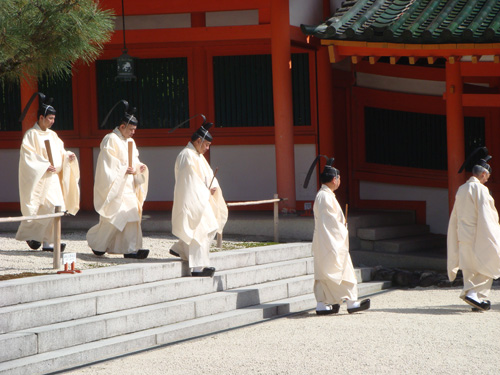
Good-bye monks. These guys really know. They have shoes like boats. They’re about to do the tea-blessing ceremony that’ll look like a funeral.

Good-bye “real Japan.” A whole lot of the Japan I saw looks more like this than like a Zen garden, not that I ever got outside of downtown Kyoto. Not many trees on the streets. I’m glad I have fairly easy access to nature. Four Mile Beach north of Santa Cruz as the ultimate Zen rock garden. The art of the Zen garden is squeezing Four Mile beach into your backyard. It’s like the bite-sized Japanese food that you get a kaiseki banquet. You make the most of it, the small size makes it manageable, and you can really focus on it. But, really, I like the big nature I can walk around in, and it’s not roped off. By now I’m totally itching to go camp in Point Reyes or Big Sur.

Good-bye drop-dead chic shoppers. One more thing I noticed about the Japanese women’s body language: they very often stand pigeon-toed. I remember loving how Elvis Costello stood pigeon-toed on his first album cover. The AC/DC guy used to do that a lot, too. Angus. The pair in this picture were attending a wedding in a restaurant, all the guests had shopping bags of presents they’d received as party favors. You see a lot of elderly people on the streets, too, though I didn’t take many pictures of them. Today we saw a woman riding by with an umbrella mounted on her bike. A special stand to hold the umbrella upright. Using it as a parasol, on a sunny autumn day.
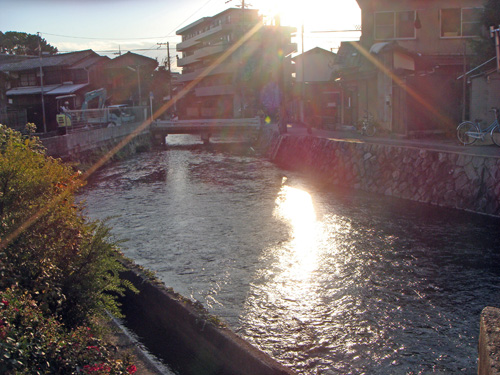
Sunset glint. There’s some nice canals in Kyoto, filled with wonderfully clear water, right out of the mountains. We ate French pastry by this canal. There’s a fad for French food in Kyoto, though they don’t exactly grasp how to do things with dairy products, so things like pastry cream, cheese cake, or ice cream all taste a bit odd. Like art painted by a blind man. All the cooking experience is with the bean. There’s a special skin of soy-bean milk called yuba, greatly esteemed, and they even make candy out of beans.
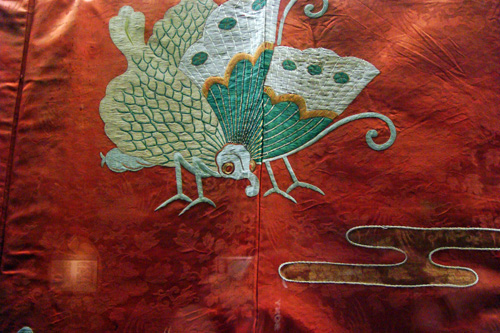
(From a kimono in the Kyoto National museum.)
So now it’s over, another milestone come and gone, whoosh, the train across the hidden valley and back into another tunnel. I’m on the plane flying East from the Far East—to Californee! Back to my fellow nectar-sipping butterfly beings.
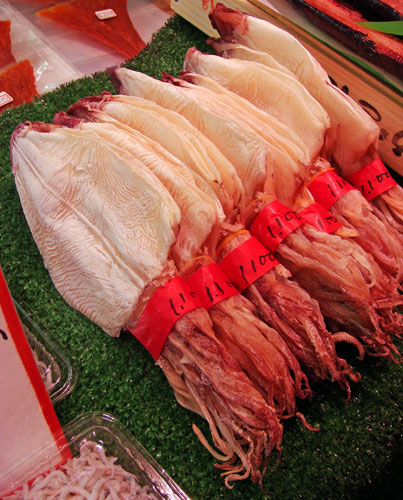
And, last but never least, good-bye cuttlefish. The last evening we had a medium priced kaiseki dinner where they served some cuttlefish sashimi. Finally I’m eating one of these fellows I’m always writing about. They taste like, um, white plastic. The steamed giant radish was much better, not to mention the broiled herring and the bean candy. Nothing ever quite what I expected. What a trip.

Sayonara, y’all.







